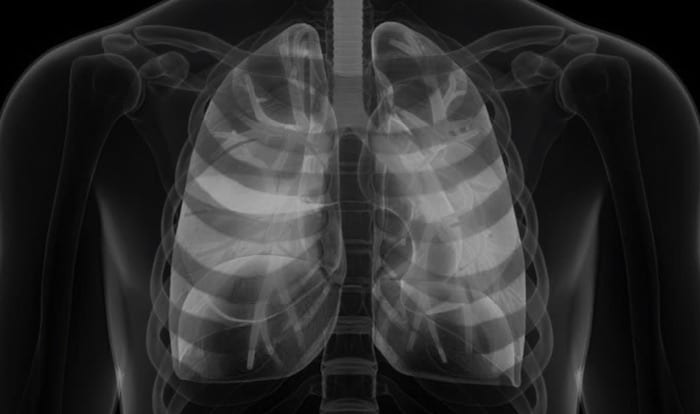Alarmingly high pressures
aka Pulmonary Puzzler 014
Having overcome his worrying episode of post-intubation hypotension in the emergency department, the man who was intubated for severe asthma in Pulmonary Puzzle 013 is now in the intensive care department. He remains mechanically ventilated.
You are asked to review him because the high airway pressure alarm is going off.
Questions
Q1. Why is the airway pressure alarm important?
Answer and interpretation
For at least three reasons:
- Excessive airway pressure may have adverse effects on the patient.
- High airway pressures may indicate a deterioration of the patient’s condition.
- It may indicate an equipment problem that needs to be addressed.
Q2. What are the potential adverse effects of excessive airway pressure?
Answer and interpretation
High airway pressures do not correlate with lung barotrauma.
Airway pressure itself is not particularly deleterious unless it reflects excessive alveolar pressure. Excessive alveolar pressure can have a number of adverse effects:
- barotrauma may result in acute lung injury (leading to ARDS) or air leaks (e.g. pneumothorax, pneumomediastinum).
- Excessive intrathoracic pressure may also result, with potential haemodynamic consequences (particularly decreased venous return, leading to hypotension and potentially cardiac arrest).
- High airway pressures may result in inadequate ventilation.
Inadequate ventilation can occur because many ventilators are set to terminate the inspiratory flow if the upper pressure limit setting is reached. When this occurs inspiratory volumes are markedly reduced, resulting in low tidal volumes and minute ventilation. Other ventilators do not do this but will simply hold the airway pressure at the pressure limit, resulting in a smaller reduction in tidal volume.
Q3. How is airway pressure related to alveolar pressure?
Answer and interpretation
airway pressure = flow x resistance + alveolar pressure
Thus if flow or resistance is markedly altered, a change in airway pressure will not be indicative of a change in the alveolar pressure.
Airway pressure is more conveniently measured than alveolar pressure. Peak inspiratory pressure (PIP) is displayed on most ventilators.
A maximum acceptable PIP of <35 cmH20 is widely used.
Q4. How can alveolar pressure be estimated?
Answer and interpretation
Alveolar pressure is estimated by determining the inspiratory pause pressure, which corresponds to the plateau pressure.
The inspiratory pause pressure is determined by observing the plateau pressure in an apneic ventilated patient when when the ‘inspiratory pause hold‘ control is activated. Because flow is reduced to zero, airway pressure and alveolar pressures will equalise and the airway pressure will correspond to the alveolar pressure at full inspiration.
airway pressure = 0 x resistance + alveolar pressure = alveolar pressure
Figure: PIP vs Pplat: Normal curve – demonstrates normal PIP , Pplat , PTA (transairway pressure), and Ti (inspiratory time). High Raw curve – A significant increase in the PTA is associated with increased airway resistance. High Flow curve – the inspiratory time is shorter than normal, indicating a higher inspiratory gas flow rate. Decreased Lung Compliance curve – An increase in the plateau pressure and a corresponding increase in the PIP is consistent with decreased lung compliance.
Q5. What is an excessive alveolar pressure?
Answer and interpretation
To prevent lung injury, alveolar pressure (aka the plateau pressure) should be kept <30 cmH2O.
High alveolar pressures can be due to excessive tidal volume, gas trapping, PEEP or low compliance as shown by this relationship:
alveolar pressure = (volume/ compliance) + PEEP
Q6. What are the two main categories of causes of high airway pressure?
Answer and interpretation
When it comes to ventilated patients you need to think: Man versus Machine
Q7. What is the most useful first step in isolating the cause of high airway pressures?
Answer and interpretation
Disconnect the patient from the ventilator and manually bag the patient using high-flow oxygen.
If the patient is difficult to ventilate the problem is not with the ventilator or the circuit, but the patient or endotracheal tube.
That’s right — deja vu …again!
Q8. What are the possible causes of high airway pressures in the intubated and ventilated patient?
Answer and interpretation
First, let’s consider the machine:
- Ventilator
- inappropriate settings
- ventilator malfunction
- Circuit
- kinking
- pooling of condensed water vapour
- wet filters causing increased resistance
- Endotracheal tube
- displacement, e.g. endobronchial intubation
- kinking
- obstruction with foreign material
And now the man:
- bronchospasm (e.g. asthma)
- decreased compliance
- lung (e.g. collapse, consolidation, pulmonary edema)
- pleural (e.g. pneumothorax, pleural effusion)
- chest wall (e.g. abdominal distention, kyhposcoliosis, obesity)
- patient-ventilator dysynchrony, coughing
Q9. How will you go about identifying the cause of the high airway pressure?
Answer and interpretation
The key steps are:
- While the patient is disconnected from the ventilator assess the “feel” of the lungs while bagging:
- If the patient is not difficult to ventilate then the problem is with the ventilator or the circuit.
- If the patient is difficult to ventilate it is a problem with the endotracheal tube or the respiratory system.
- For ventilator and circuit problems:
- check the ventilator settings that it is functioning correctly (e.g. on a test lung)
- check the circuit for obstruction or kinking.
- For patient or ETT problems:
- examine the patient looking for:
- wheeze
- asymmetrical chest expansion
- evidence of collapse
- evidence of dyssynchrony
- Pass a suction catheter through the ETT to check its patency.
- perform a CXR to check ETT position and look for potential causes of decreased compliance.
- examine the patient looking for:
- If the cause is still not clear measure inspiratory pause pressure to estimate alveolar pressure, in addition to the peak inspiratory pressure that reflects airway pressure.
- If both airway and alveolar pressure are high the problem is due to poor compliance (e.g. pulmonary edema).
- If only the airway pressure is high the problem is one of high resistance (e.g. bronchospasm).
Upon assessing the patient you decide that the high airway pressure alarms are due to patient-ventilator dyssynchrony, in addition to ongoing bronchoconstriction…
References
- For more Pulmonary cases check out the LITFL Top 150 Chest X-Rays
- Gomersall C. ICU Web — Trouble-shooting mechanical ventilation; and Asthma.
- Weingart S. EMCrit Podcast 16 – Coding Asthmatic, DOPES, & Finger Thoracostomy.

CLINICAL CASES
Pulmonary Puzzler
Chris is an Intensivist and ECMO specialist at The Alfred ICU, where he is Deputy Director (Education). He is a Clinical Adjunct Associate Professor at Monash University, the Lead for the Clinician Educator Incubator programme, and a CICM First Part Examiner.
He is an internationally recognised Clinician Educator with a passion for helping clinicians learn and for improving the clinical performance of individuals and collectives. He was one of the founders of the FOAM movement (Free Open-Access Medical education) has been recognised for his contributions to education with awards from ANZICS, ANZAHPE, and ACEM.
His one great achievement is being the father of three amazing children.
On Bluesky, he is @precordialthump.bsky.social and on the site that Elon has screwed up, he is @precordialthump.
| INTENSIVE | RAGE | Resuscitology | SMACC


